calsfoundation@cals.org
Paul Wilbur Klipsch (1904–2002)
Paul Klipsch was an American engineer and audio pioneer whose work in acoustics gave rise to speaker technologies that radically enhanced sound quality for music lovers around the world. His factory was based in Hope (Hempstead County), and his achievements led to his induction into the Engineering and Science Hall of Fame in 1997. According to the Klipsch Museum, Paul Klipsch and Thomas Edison were the only two people from the audio industry to receive that honor since 1946.
Paul Wilbur Klipsch was born on March 9, 1904, in Elkhart, Indiana, to Minna Eddy Klipsch, who was a homemaker, and Oscar Colman Klipsch, who was an instructor of mechanical engineering at Purdue University. Paul Klipsch moved with his family to Silver City, New Mexico, and then relocated with his mother to El Paso, Texas, after the death of his father when Klipsch was twelve. As a boy, he became fascinated with the technology of sound. In 1919, at age fifteen, he built a radio receiver. This was a year before the first scheduled commercial U.S. radio broadcast, which took place in 1920.
Klipsch graduated from El Paso High School in 1922. He attended college at New Mexico Agriculture and Mechanical College (which became New Mexico State University), graduating in 1926 with a degree in electrical engineering. After graduation, he joined General Electric in Schenectady, New York, designing radios that were marketed by RCA.
In 1928, his interest in railroad technology led him to South America, where he was a locomotive maintenance supervisor in Chile for three years. Visiting his mother in El Paso on the way to Chile in 1928, Klipsch met and later married his first wife, Belle Hulling, who lived across the street from his mother’s house.
Returning to the United States in 1931, Klipsch entered Stanford University in California and received an MS in electrical engineering in 1934. For the next seven years, he worked in Houston, Texas, as a geophysicist in oil exploration. In his spare time, he researched the design of audio speakers based on an idea that they would sound better when placed in a corner, allowing the walls to essentially act as part of the speaker.
In August 1941, a few months prior to America’s entry into World War II, Klipsch enlisted for active duty in the U.S. Army as a second lieutenant. He was assigned to the Southwestern Proving Ground in Hope, Arkansas, which was used during the war to test artillery shells.
After the war ended in 1945, Klipsch remained in Hope for the rest of his life. From there, he devoted his career to designing and building superior loudspeakers. Renting a tin shed behind a dry cleaner in Hope, he made components for his first Klipschorn speaker.
Klipsch received a patent on his loudspeaker design in 1945, registering the name Klipsch and Associates in 1946. At first, he made each loudspeaker himself by hand, not hiring his first employee until 1948. His wife, Belle Klipsch, served as his secretary.
Klipsch went on to earn twelve patents in acoustics along with eight in geophysics and three in ballistics.
In 1966, Paul Klipsch was awarded the NMSU Alumni Award from New Mexico State University, also receiving an Honorary Doctor of Laws degree from NMSU in 1981. His alma mater would go on to dedicate the Paul W. Klipsch Department of Electrical and Computer Engineering, the Paul W. Klipsch Lecture Hall, and the Klipsch School of Electrical Engineering in his honor. The Paul W. Klipsch Museum at NMSU installed a listening area where several speaker types can be compared for the quality of their sound reproduction.
After the death of his first wife, Paul Klipsch married Valerie Booles in 1976. They continued to live in Hope, where he was a thirty-third-degree Mason and a member of the local Rotary Club. The town named its municipal auditorium in his honor in 1995.
His philanthropic activities in Arkansas included gifts to the Arkansas Ballet, Arkansas State University, Arkansas Symphony Orchestra, and Wildwood Park for the Arts. National honors include the Silver Medal from the Audio Engineering Society and induction into the Audio Hall of Fame in 1983.
Paul Klipsch died at the age of ninety-eight on May 5, 2002. He is interred at Rose Hill Cemetery in Hempstead County.
In 2004, Klipsch was posthumously inducted into the Consumer Electronics Hall of Fame. The honor is considered a significant accolade, considering that a fellow inductee that year was Steve Wozniak, co-founder of Apple Computers.
In 2011, Audiovox, a consumer electronics firm headquartered in Orlando, Florida, purchased Klipsch Audio Technologies. Audiovox was renamed Voxx in 2012. Manufacturing Klipschorn speakers continued to take place under the Klipsch name, as Klipsch Group, Inc., carrying the legacy of Paul Klipsch.
For additional information:
Berry, Laurie. “Hope’s Mad Genius.” Arkansas Times, March 1984, pp. 36–41.
Friedman, Mark. “Klipsch: Hope’s Sweet Sound since 1946.” Arkansas Business, July 31–August 6, 2006, pp. 1, 22–23.
Klipsch Group, Inc. http://www.klipsch.com (accessed July 14, 2021).
“Klipsch Museum and Chatting with Paul W Klipsch.” https://www.youtube.com/watch?v=Js7dmOeh6HQ (accessed July 14, 2021).
Klipsch Museum of Audio History. https://www.klipschmuseum.org (accessed July 14, 2021).
Paul W. Klipsch Museum. College of Engineering, New Mexico State University. https://engr.nmsu.edu/the-paul-w-klipsch-museum (accessed July 14, 2021).
“Paul W. Klipsch.” Klipsch Group, Inc. https://www.klipsch.com/founder (accessed July 14, 2021).
“Paul W. Klipsch 06.21.1954 Interview.” https://www.youtube.com/watch?v=xyMtlKQ7TtI (accessed July 14, 2021).
“Paul W. Klipsch Biography—90th Birthday.” https://www.youtube.com/watch?v=-HpwzFQBp8Y (accessed July 14, 2021).
Nancy Hendricks
Garland County Historical Society
 Business, Commerce, and Industry
Business, Commerce, and Industry Divergent Prosperity and the Arc of Reform, 1968–2022
Divergent Prosperity and the Arc of Reform, 1968–2022 Science and Technology
Science and Technology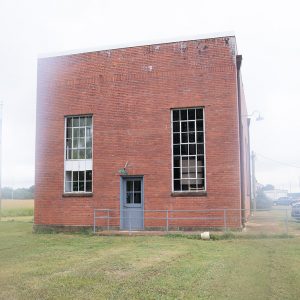 Klipsch Education Center
Klipsch Education Center 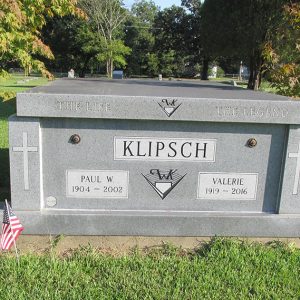 Klipsch Gravesite
Klipsch Gravesite 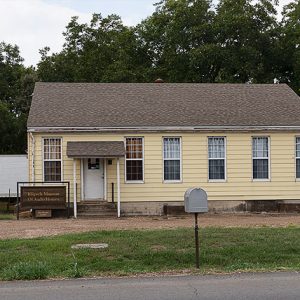 Klipsch Museum
Klipsch Museum 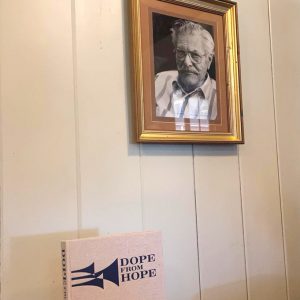 Klipsch Portrait and "Dope from Hope" Collection
Klipsch Portrait and "Dope from Hope" Collection 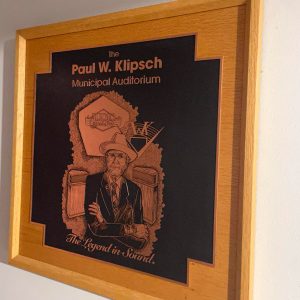 Klipsch Municipal Auditorium Plaque
Klipsch Municipal Auditorium Plaque 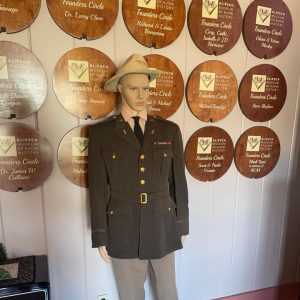 Paul Klipsch's U.S. Army Uniform
Paul Klipsch's U.S. Army Uniform 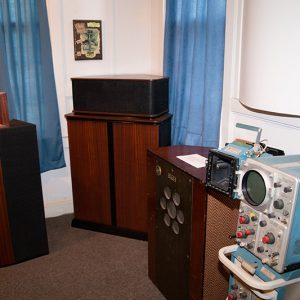 Klipsch Speakers
Klipsch Speakers 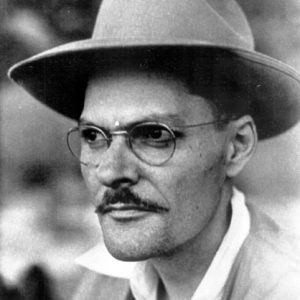 Paul Klipsch
Paul Klipsch 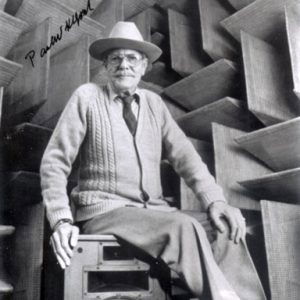 Paul Klipsch
Paul Klipsch 



Comments
No comments on this entry yet.